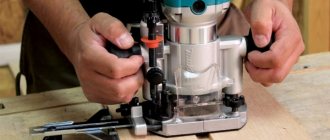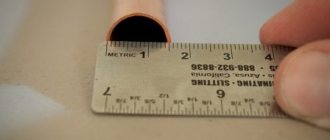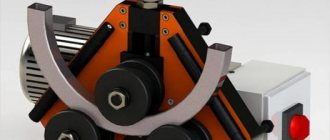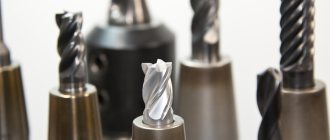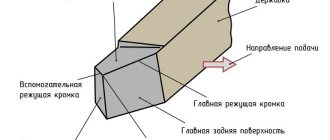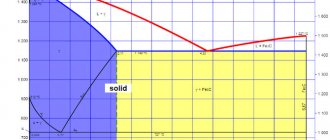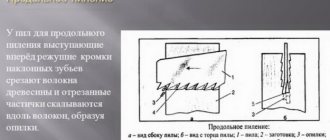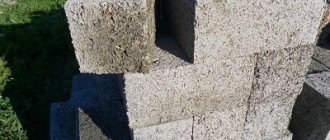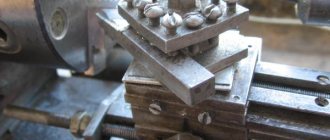Metal-cutting machines are machines for processing workpieces to a precisely specified size by removing a layer of allowance to form chips.
For work, an abrasive or blade cutting tool is mainly used. The machines also perform surface smoothing, roller rolling and other operations. Metalworking equipment allows processing of metallic and non-metallic materials. For example, nylon, textolite, various types of plastics and wood, but special machines are designed for processing hard materials (ceramics or glass).
Classification of units by groups
The main division of the array of metal-cutting machines occurs according to the technological method of processing, the method of moving mechanisms and the type of tool used.
There are 10 groups of machines:
- The first group is turning units. They make up about 30% of the machine park. Used for turning rotary parts. The cutting motion for the group is the rotation of the workpiece.
- The second is drilling and boring units. Their share is 20%, they are used for processing holes in various ways. Rotation of the tool and its feed with a stationary part are the main cutting movements. For boring machines, the table stroke with the part is added.
- The third is grinding, polishing, sharpening and finishing equipment. They make up 20% of the total number of such equipment. They work with an abrasive tool. Polishing and finishing units use abrasive paste and powder, sanding belts and bars.
- The fourth is devices for physical-chemical processing and combined ones. This group includes, for example, a unit for electrical discharge machining.
- The fifth group is gear-processing and thread-processing devices. They make up 6% of the entire fleet. Used for cutting different types of gears and threads. They perform roughing and finishing operations.
- Sixth – milling machines. Account for 15% of the total number of equipment. The working tools are multi-edge milling cutters of different designs.
- The seventh group is planing, broaching, and slotting machines. They account for 4% of machine tools. They have a linear working movement of the table. In slotting machines, the main movement is the reciprocating movement of the cutter. Broaching machines are used for processing holes and grooves using a multi-bladed tool - a broach.
- Eighth – cutting machines. Used for cutting workpieces such as circles, corners, rods.
- The ninth group is different machines. This group includes machines for balancing, straightening and other operations.
- The tenth is reserve. Multi-task machines such as CNC equipment and machining centers allow a number of machining methods to be implemented. In accordance with the type of operation performed, they are included in one of the machine groups.
Types of metal cutting machines
Units for cutting metal are very diverse. Here are their main categories:
- Milling group machines. Among the non-console ones there are engraving, copying, longitudinal and vertical installations. Among the console ones there are widely universal, horizontal and vertical devices.
- Lathes. They can be rotary, frontal, drilling and cutting, revolving, multi-cut copying, single or multi-spindle, as well as specialized (that is, automatic or semi-automatic).
- Grinding. They can be cylindrical, internal or surface grinding. This also includes different types of sharpening and specialized units, polishing and roughing equipment.
- Planing. These are broaching devices of vertical or horizontal type, as well as longitudinal models with one or two posts.
- Split. These are straightening cutting devices, as well as machines equipped with smooth metal discs or abrasive wheels. Models with cutters or saws - hacksaws, disks, and bands - fall into the same category.
- Units for processing components of threaded and gear connections. They can be gear-finishing, gear-milling, thread-milling, thread-cutting, thread- and gear-grinding, checking, for processing elements of worm pairs and the ends of teeth, as well as gear-planing for cylindrical gears or gear-cutting for working with bevel wheels.
- Models for drilling and boring. They are equipped with one or more spindles. Boring units are horizontal, diamond or coordinate, drilling machines are radial, horizontal or vertical.
There are other types of units that do not belong to any of the above categories. For example, machines can be sawing machines, filing machines, dividing machines, balancing machines, centerless and leveling machines, and so on.
Classification by type
Within each of the 10 groups, there is a division into 10 types in accordance with the following criteria:
- layout of basic units;
- processing method and tool used;
- level of automation and other technological features.
For example, the group of grinding and polishing machines includes cylindrical and surface grinding machines, longitudinal grinding and lapping machines. In the group of planing and slotting machines there are single-column longitudinal planers, transverse planers and slotters.
Within one type there is a division into 10 standard sizes.
The classification of metal-cutting machines according to a set of technological parameters is clearly presented in the table.
Classification of metal-cutting machines by accuracy class
The entire fleet of machining machines is divided into 10 groups. Each group has a division of 10 types, and each is further divided into 10 standard sizes.
The criterion for a group is the commonality of the technological method of processing or the similarity of purpose. For example, planing and broaching, gear processing and thread processing.
Each type combines a degree of versatility, the number of main working bodies, purpose, and design. Within a type, equipment differs in six technical parameters.
Reserve group 0 includes machines operating using the latest technological methods.
Metal cutting machines
Design of metal-cutting machines equipped with CNC
Any machine model contains key elements responsible for its functioning. They provide the movement through which cutting occurs and the feed movement performed by the workpiece or cutting tool. To perform both functions, the unit must contain the following three components:
- Control system. It starts and stops the device, controls all stages of its operation.
- Drive - hydraulic, pneumatic, mechanical or electric.
- A unit that transforms movement from an electric motor and transmits it to the actuator.
Separately, it is worth mentioning the units of metal-cutting equipment on which cutting tools are placed. They are present on all machines, since without them the units would not cope with their function.
Organize by base size
Standards regulate the basic parameters of equipment characteristic of this type. For a group of turning and cylindrical grinding machines, this is the maximum size of the part for processing.
For milling machines, the main consideration is the size of the work table for installing workpieces and equipment. For cross-planing machines, the basic value is the stroke of the slider.
A set of machines for one type of processing, with similar kinematics and structure, but differing in main dimensions, is called a size range. For example, according to the standards, gear hobbing machines have 12 standard sizes with a maximum workpiece diameter for processing from 80 mm to 12.5 thousand mm.
The size range of lathes differs in the size of the workpiece: 250, 320, 400 and more. The introduction of size ranges unifies parts and facilitates the design and repair of machine tools.
Additional classification
There is an additional division of machines:
- according to the degree of versatility, metal-cutting equipment can be universal and standard;
- for performing many types of operations, processing a wide range of products in size and shape: general purpose and narrow-profile;
- For a specific type of work on the manufacture of various parts, there is specialized equipment;
- for clearly specified work - intended for processing parts of the same configuration, but with different dimensions, for example, crankshafts, gearbox housings.
- special - performs certain operations with a clearly defined type of part in shape and slight fluctuations in size.
Universal machine equipment is used in small-scale production. Specialized and special machines with a high level of automation are in demand in large-scale and mass production, where large batches of parts are produced.
Special machine ROLLER 2800 CNC
Exhibition of metalworking equipment
The metalworking exhibition is a serious, highly specialized event that brings together professionals in this field. Progressive equipment, new surface treatment techniques, modern software, components - all this is presented at the organized exhibition. Here you will find: information about the latest scientific achievements, meaningful communication with experts and a thoughtful business program.
Participants and visitors
The participants of the event are world-famous companies and little-known manufacturers/suppliers who strive to increase demand and effective product promotion. The main task is to demonstrate high-performance machine tools, tools, materials and the latest developments in this industry.
Among visitors :
- general directors and deputies;
- leading technologists;
- chief engineers.
Professionals in such industrial sectors as shipbuilding and mechanical engineering, metallurgy, energy, construction and so on gather here. Managers of manufacturing companies and factories choose high-performance machine tools to efficiently complete their tasks.
Advantages of exhibitions
Each side receives beneficial positive aspects, which we will discuss in more detail.
Event participants can, as soon as possible,:
- find potential buyers willing to purchase specialized equipment and tools for metalworking;
- increase the number of sales;
- expand the territorial boundaries of sales;
- arrange a demonstration of modern technological solutions and innovative developments of the company;
- learn an unbiased analysis of the technical characteristics and performance indicators of the exhibited equipment;
- establish communication with intermediary organizations and company managers using the proposed machine systems.
The benefits for visitors will be:
- a wide range of high-performance devices;
- direct analysis of technical indicators;
- studying the latest developments;
- testing of modern technologies in operating mode;
- execution of transactions on favorable terms;
- expert recommendations on the correct choice of metalworking products.
The conditions of highly specialized exhibitions allow participants and visitors to begin business relationships, which will subsequently lead to long-term mutually beneficial cooperation.
Division by accuracy classes
The entire variety of metalworking machines is divided by accuracy class:
- normal – H;
- increased – P;
- high – B;
- especially high – A;
- especially precise (master machines) – C.
Screw-cutting lathe 1V625MP of increased accuracy class
The main part of the machine equipment provides processing according to 6–9 accuracy grades. Machines belonging to classes A, B and C have increased requirements for operating conditions, this is due to their very high accuracy. Their installation requires separate rooms with constant temperature and humidity.
Metal-cutting machines cannot exist without markings. The letter designating the accuracy class, except for machines with normal accuracy H, is added to the marking. For example, 16K20P.
Advanced Metalworking Techniques
In industrial conditions, both the latest and long-known methods are used for metal processing. Modern types of metalworking equipment meet the following requirements:
- productivity – industrial volumes require high speed of operations;
- accuracy - you need to maintain dimensions when manufacturing even the smallest parts;
- reliability and wear resistance.
Industrial equipment for metalworking is divided according to the type of impact on the material. Cutting can rightfully be considered the most common operation at metalworking enterprises.
Gas metal cutting
This method has been known for a long time, but the machines currently produced are fully automated. This eliminates inaccuracies when cutting sheets, which can be caused by the human factor. The disadvantages of the method are low accuracy and heat shrinkage of the metal. Pros: low cost of equipment and high speed of execution.
Plasma cutting machines
Cutting occurs using a narrow plasma jet, which allows for high precision and arbitrary shapes of the workpiece. The high quality of the surface at the cut site, productivity and the ability to cut almost any part are offset by one drawback - plasma machines are not cheap.
Laser processing
Laser cutting machines are precise and prevent loss of material at the cut site due to its small width. This type of equipment is used for processing soft non-ferrous metals: aluminum, brass, bronze (including valuable ones). Laser cutting machines are often used to produce blanks for electronic circuit boards and parts for modern household appliances.
Waterjet and electroerosive machines
These types of equipment are used for precise cutting of any metal of any thickness. The relatively low processing speed is compensated by quality. Both methods guarantee high accuracy and very low cutting allowance consumption. Waterjet and electroerosive machines are used in space, electronics and other types of industries.
Gantry metal gas cutting machines
When processing industrial volumes of metal, modern enterprises use portal gas cutting machines. The design of the machine allows you to place sheets ranging in size from 1.5x3 m to 3x12 m in the working area.
This cutting method is economical, but there is also a small drawback. When processing sheet metal of small thickness, heat shrinkage and a decrease in cutting accuracy are possible. The operator will need maximum care and experience when working with a gantry gas cutting machine.
By degree of automation
Metal-cutting machines are often produced with an additional automation function. Depending on the degree of automation, machines are divided into the following types:
- manual control;
- semi-automatic, when the processing cycle is carried out automatically, and the operator changes the workpiece and turns on the machine;
- automatic machines, where many work cycles continuously occur automatically, without an operator, including tool replacement, loading and unloading of parts;
- CNC machines, they are produced with the function of quickly changing operating modes by adjusting the program.
CNC lathes
Modern metal-cutting machines are produced with additional equipment, this speeds up the process of processing the material. Craftsmen can increase the degree of automation in small-scale production by making greater use of machines with numerical (cyclic) program control (CNC). Their markings contain the letter F (C).
The number behind the letter indicates the type of control system:
- digital indication F1 – the system allows you to make a preliminary set of coordinates, the digital indication displays in numerical terms the current position and movement of the moving unit of the machine;
- rectangular or positional system F2;
- contour F3;
- universal F4 – combines contour and positional processing of a part.
Metal cutting machines
Regardless of the group, type and model of the device, processing consists in the fact that the workpiece and cutting tool perform shaping movements. Due to these movements, the dimensions and configuration of the object are set. For CNC models, a program is prescribed in advance, taking into account all the nuances of a particular object, and it is loaded into the controller using a programmer. From the controller, commands are sent to the operating components of the unit. At the end of the program, the device turns off automatically.
Computer numerical control devices provide significantly higher processing speed and accuracy compared to traditional analogues. They are purchased for large-scale production, since such models are successfully integrated into large automated lines.
A technology that involves removing a certain part of material from an object’s body in order to obtain the desired geometry is known as subtractive. The object to which the impact is applied can be either sheet metal or solid metal. From sheet metal, flat objects of various configurations are obtained, from massive material - three-dimensional objects with any desired number of surfaces.
From a physics point of view, metal can be cut if its crystal lattice is disrupted. When a cutting tool plunges into an object and moves along its surface, it breaks the atomic bonds in the structure of the object with its hard, sharp edges. During plasma or laser cutting, the bond between atoms breaks down due to high temperatures. During guillotine cutting or stamping, the crystal lattice is destroyed due to shear deformation. The advantage of this method is that it leaves no waste behind.
Sawdust poses a major problem in the metalworking process. Metal shavings getting inside the machine can lead to breakdowns. Therefore, the equipment must be covered with safety covers, and the chips must be removed in a timely manner. Operators of outdated machine models collect sawdust by hand. Modern models have conveyor belts that transport the chips to a disposal container. Dust extractors are installed on the grinding and sharpening units, which remove waste from the processing area.
Designation principle
Models of metal-cutting machines have an original designation, in the form of a combination of letters and numbers.
The following marking order has been established:
- the initial number is the machine’s belonging to the group;
- the next component shows its type;
- the third and fourth indicate a characteristic parameter (workpiece size, table dimensions).
Decoding the machine markings
The letter after the first or second digit indicates modernization in terms of basic parameters. Any letter completing the marking other than A, C, B, H, M, P and F indicates a modification carried out with a change in the design of the units.
The letters A, C, P, B indicate the accuracy class. When a tool magazine appears at the machine, the letter M is added.
Modern types of metal-cutting machines are different. To designate CNC machines, F is used, but where there is a turret, it is present at the end of the marking P.
Such metal-cutting machines are very popular among craftsmen.
For example, the designation 2N135 indicates that this is a vertical drilling machine of the second group, type 1 with modernization N. The maximum diameter of the installed drill is 35 mm.
